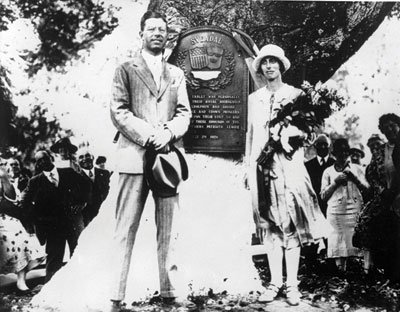Q: Where was the San Benito County town of Groganville located?
A: The community of “Groganville” still exists, but under a different name now. It was founded by Alexander Grogan, an immigrant from Belfast, Ireland, who came to San Francisco in 1848 and made his fortune during the California Gold Rush. In 1867, Grogan used $17,000 in gold coins to purchase from Francisco Villegas the Rancho Cienega de los Paicines. The Irishman also purchased about 2,000 acres of land from rancher Theophile Vache who had started a winery on Cienega Valley in 1854. This winery was the first commercial grape-growing business in San Benito County.
In 1874, seeing the need for dairy products for the booming town of Hollister, Grogan decided to develop his Paicines Ranch enterprise. He imported Ayrshire cows and began expanding his operations into a cheese-making operation by constructing several ranch buildings devoted to cheese making. Nearby along the dirt country road – which later became present-day Highway 25 – an agricultural village was established to service Grogan’s dairy operations as well as other ranchers in the southern region of South Valley.
The community had a small church, a general store and a hotel. For a period of three months in 1874, the town was known as Groganville (or simply “Grogan,” according to Marjorie Pierce’s book East of the Gabilans). The name was soon changed to Tres Pinos, but the community later surrendered that name to another village several miles north up the road. Today, the small community that was once Groganville is known as Paicines after Grogan’s dairy ranch.
Q: Who was South Valley’s Hecker Pass named after?
A: The scenic drive along Highway 156 that stretches over Mt. Madonna from Gilroy to Watsonville was named after Henry Hecker. A political legend of his time, he was a dedicated Santa Clara County supervisor who represented the southern portions of the county during the 1920s.
Hecker pushed hard to build the mountain road because he thought it would be faster for travelers to take a more direct route to Watsonville rather than going the long way through Chittenden Pass. He also believed it would greatly benefit the local South Valley economy.
Editorials in the Gilroy Dispatch at the time of its construction enthusiastically suggested that Hecker Pass would bring thousands of vacationers to the Mt. Madonna County Park near the summit. The pass was also seen as a way to allow tourists to easily drive from the vacation spots of Santa Cruz, Aptos and Capitola to the San Joaquin Valley and Yosemite National Park. Of course, these travelers would have to go through downtown Gilroy and spend money for gasoline and food there.
More than 6,000 local citizens and dignitaries celebrated the opening of Hecker Pass at a ribbon-cutting ceremony held on May 27, 1928, at the summit of Mt. Madonna. Most notable was Henry Hecker himself who no doubt beamed with pride at the fulfillment of his dream.
Q: Did European royalty ever tour the South Valley on an official state visit?
A: Swedish Crown Prince Gustav Adolph and his wife Crown Princess Louise once journeyed to our region to help in the dedication of a summer resort in nearby Uvas Canyon. In 1926, the royal couple were on a tour of the United States. The Swedish American Patriotic League in the Bay Area had recently developed its 106-acre “Sveadal” resort set in the Santa Cruz Mountains just west of Morgan Hill, so Swedish Consul General Carl Wallerstedt asked the 44-year-old prince if he and his wife would officially dedicate the new vacation spot . The royal couple happily agreed.
On July 29, 1926, the big day arrived for the prince and princess to travel to the South Valley. After touring Stanford University’s campus, they and their entourage drove down to Morgan Hill.
On their arrival that morning, the royal couple were warmly greeted by about 500 local residents and members of the Swedish community in a procession down Monterey Street. The couple were soon taken to the downtown Skeels Hotel and greeted warmly by Harry and Cynthia Skeels. The proprietors and some of the city officials then took the Swedish couple to a second-story corner room overlooking Monterey Street. There, the couple stepped out onto the balcony to wave at the crowd. Prince Gustav Adolph addressed Morgan Hill citizens in both Swedish and English. The locals noticed Princess Louise wore pink garters discreetly below her knees.
Today, a historic plaque on the wall of the old Skeels Hotel in downtown Morgan Hill serves as one of the few reminders of the time European royalty graced the community with a special visit.














